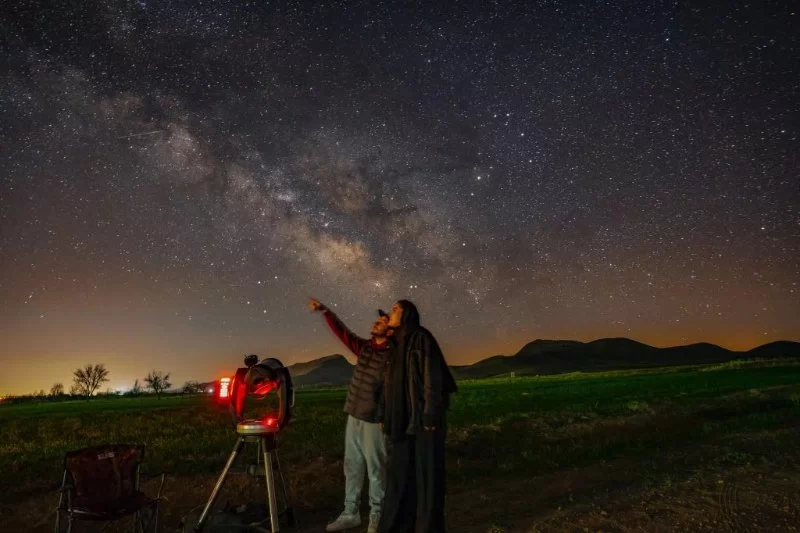- 1-shared-experience-value
- 2-learning-through-community
- 3-equipment-access-and-technical-growth
- 4-mental-wellness-and-nature-connection
- 5-real-stories-of-transformation
- 6-how-to-find-the-right-astronomy-club
1. The Value of Shared Stargazing Experiences
1.1 More Than Just Looking Up
Joining an outdoor astronomy club isn’t just about telescopes and constellations—it’s about shared moments. Picture this: you're standing in the quiet of a clear summer night, somewhere in the Midwest, with a dozen fellow stargazers, all holding their breath as Jupiter’s moons come into view. That moment is amplified by the company. Outdoor astronomy clubs create memories that are hard to replicate alone.
1.2 Building Connections Under the Stars
Clubs are social hubs. Whether you’re a teen discovering Saturn’s rings for the first time or a retiree revisiting your childhood love of space, these communities offer acceptance and enthusiasm. Stargazing becomes not just a hobby, but a shared adventure. Events like “Star Parties” across the U.S. bring together people of all ages and backgrounds to connect over cosmic beauty.
2. Learning Through Community Engagement
2.1 Mentorship for Beginners
New to astronomy? Outdoor astronomy clubs are the best place to begin. Experienced members often serve as informal mentors, happy to explain telescope alignment, night sky navigation, or the phases of the Moon. It’s hands-on education in its most approachable form, and far more enjoyable than scrolling through YouTube videos alone.
2.2 Workshops, Events, and Guest Lectures
Most clubs host monthly events with guest speakers—professional astronomers, astrophotographers, or even NASA scientists. These aren’t dry lectures. You get real-world insights, fascinating discoveries, and an insider look into celestial science. The blend of practical stargazing and academic enrichment makes clubs a goldmine for curious minds.
3. Equipment Access and Technical Growth
3.1 Trying Before Buying
Telescopes aren’t cheap—and buying the wrong one is a common (and costly) mistake. Outdoor astronomy clubs usually have shared equipment that members can use, from Dobsonians to high-tech computerized scopes. You get the chance to experiment and understand your preferences before investing.
3.2 Learning the Tools of the Trade
Beyond telescopes, clubs often have members who are skilled in astrophotography, sky mapping software, or even radio astronomy. Joining them is like entering a hands-on lab of astronomical innovation. It’s not unusual for members to collaborate on scientific projects, from asteroid tracking to submitting data to NASA citizen science platforms.
4. Mental Wellness and Connection to Nature
4.1 The Therapeutic Power of the Night Sky
Standing under a dome of stars has a calming effect that’s hard to describe. Many club members report reduced stress, improved sleep, and a renewed appreciation for nature after regular outings. Stargazing becomes not only an intellectual pursuit but a form of emotional self-care.
4.2 Disconnect to Reconnect
In our screen-heavy culture, outdoor astronomy forces you to put down the phone and look up. The peace of a starlit forest or the wide-open silence of a mountaintop observatory gives you space to breathe. Places like Pine Cliff Resort, where night skies remain untouched by urban light pollution, offer ideal conditions for this digital detox. It’s no surprise many find these nights more rejuvenating than a spa weekend.
5. Real Stories of Transformation Through Astronomy Clubs
5.1 From Bored Teen to Budding Scientist
Take Michael, a high school sophomore from Arizona. Initially dragged to a star party by his uncle, he became captivated by Saturn’s rings. That night changed his career path. Two years later, he earned a scholarship to study astrophysics, crediting his local outdoor astronomy club for igniting the spark.
5.2 Healing Through the Universe
Emily, a retired nurse from Oregon, joined an astronomy club after the loss of her husband. The quiet, the stars, the companionship—it gave her peace. She now organizes local stargazing sessions for senior citizens, offering others the same solace she found among the stars. Her story is a moving reminder that looking up sometimes helps us move forward.
6. How to Find the Right Outdoor Astronomy Club
6.1 Local Resources and Online Communities
From national organizations like the Astronomical League to local Facebook groups, there’s no shortage of ways to find a club near you. Public libraries, science museums, and planetariums often have bulletin boards or newsletters with event listings. You can also find outdoor astronomy club meetups hosted at dark-sky locations like Pine Cliff Resort—where breathtaking views and community await.
6.2 What to Look For in a Club
When evaluating a club, consider their meeting frequency, type of equipment available, and whether they welcome beginners. A great club should feel welcoming, not intimidating. Look for one that balances educational structure with relaxed outdoor enjoyment. Once you find the right fit, you’ll never look at the night sky the same way again.







